When deciding whether to remove a tattoo, it is important to consider all the options carefully. It’s not shocking that people are getting advice on “how to remove a tattoo at home naturally“. The demand for homemade remedies and non-invasive techniques has increased in recent years. The much effective and professional method of tattoo removal is laser tattoo removal and it is highly recommended by a lot of people. However, some people look for homemade remedies for tattoo removal because of laser tattoo removal cost, convenience, or personal preference.
“Consider laser tattoo removal as your first option: after laser therapy, the tattoo will disappear, so you won’t have to try anything else.“
The fact is, though, that before trying any at-home tattoo removal technique, it’s crucial to understand facts, risks, and efficacy. Let’s discuss some of the most common home remedies, their possible effectiveness, and the associated risks.
Key Takeaways
- Salabrasion, lemon juice, or creams are some of the more famous methods of tattoo removal used at home. But they are largely ineffective and risky.
- DIY tattoo removal procedures can result in scarring, infection, and incomplete removal.
- The safest and most effective way to remove tattoos is the laser tattoo removal procedure, despite its price.
- Taking care of a tattoo at home is best done with the guidance of a professional.
- You can avoid pain, damage to your skin, and ineffective results. You don’t need to take shortcuts when it comes to your skin’s health.
How Does Tattoo Removal Work
First, you need to know how tattoo removal works and understand what happens to your skin when you start getting tattoos.
The ink of the tattoo is injected into the inner layer of the skin during the tattoo session. Under the epidermis, this is the layer of skin below the surface. Tattoo ink is enclosed in the dermal layer and then protected by the epidermal layer.
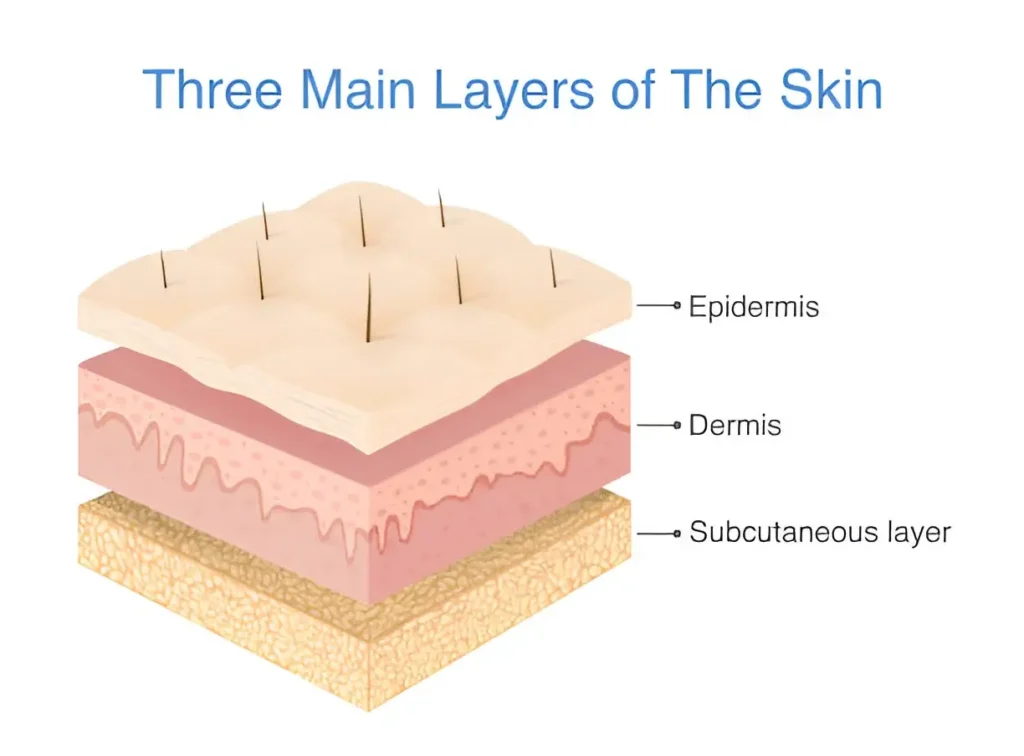
Using laser technology, tattoos are removed by destroying ink particles in the skin. The laser emits high-intensity light beams to target tattoo pigments. Over time, the body’s immune system absorbs and eliminates the smaller particles fragmented by these light pulses. Depending on the tattoo’s size, colour, and depth, it may take more than one session to complete it.
How To Remove A Tattoo At Home
Some of the working home tattoo removal methods are discussed below. All of these methods are good for naturally removing tattoos at home:
1. Salabrasion Tattoo Removal
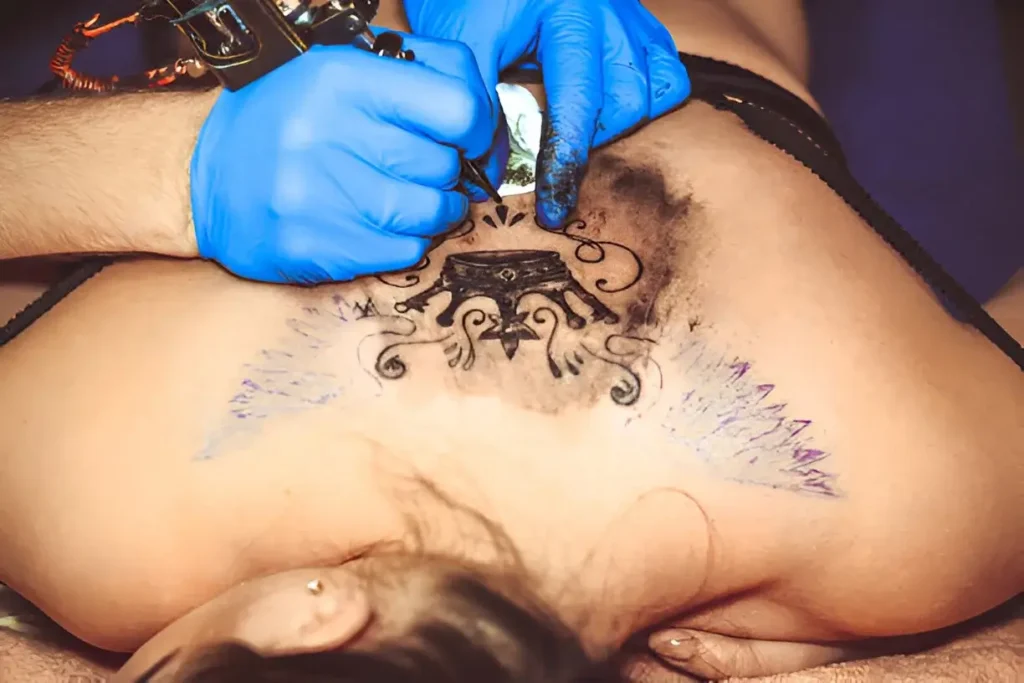
- Process: This method involves using salt to scrub away the upper layers of skin where the tattoo ink resides. Salt and water are often combined or abrasive tools are used to rub the area.
- Effectiveness: It is unlikely that salabrasion will completely remove the tattoo, but the skin will peel and fade over time. This technique can cause scarring, and it is extremely painful.
- Risks: Skin damage, infection, permanent scarring, and uneven pigmentation of the skin.
2. Lemon Juice and Salt Scrub

- Process: It is a mixture of lemon juice and salt that is applied to the tattooed area, with the belief that the acidic properties of lemon juice will help break down the tattoo ink while salt acts as an exfoliant.
- Effectiveness: The juice of lemon is known for its skin-lightening properties. This method is not powerful enough to penetrate the inner layers of skin where tattoo ink resides. It will help to lighten the tattoo but it won’t remove it completely.
- Risks: Skin irritation, burns, and possible infection if the skin barrier is compromised.
3. Aloe Vera and Yogurt Tattoo Removal Method

- Process: The blend of yogurt, aloe vera, and honey is applied to the tattoo area in hopes that the combination will slowly fade the tattoo ink.
- Effectiveness: Aloe vera is soothing and beneficial for the skin. However, it does not have any properties that can remove tattoo ink. The method does not work for tattoos with significant fading.
- Risks: There are not too many risks, but it is unlikely to produce any results as far as moisturizing the skin is concerned.
4. Tattoo Removal Creams
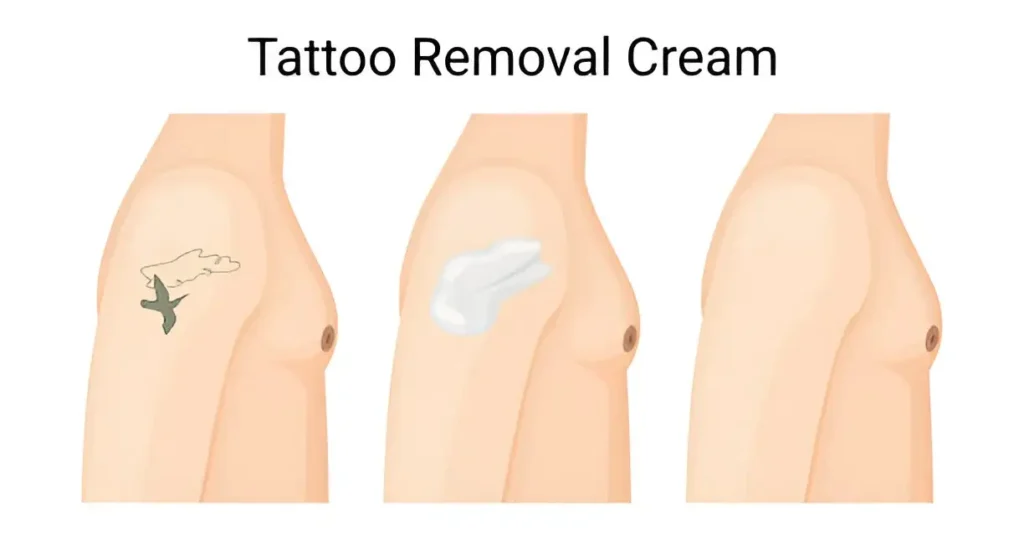
- Process: Tattoo removal creams normally contain ingredients such as trichloroacetic acid (TCA), glycolic acid, or hydroquinone. Regular use of the cream helps you dissolve or fade the tattoo over time.
- Effectiveness: Plenty of people who use this cream report minimal to no fading after months of use. Because tattoo removal creams do not penetrate to the inner reaches of the layers of skin where the tattoo ink is stored.
- Risks: Removal cream risks include skin irritation, allergic reactions, chemical burns, and uneven skin tone.
5. Glycolic Acid Peel
- Process: Peeling away the top layers of skin is achieved by applying a glycolic acid solution. Using it repeatedly may help fade the tattoo.
- Effectiveness: Using this method may remove minor fading over time, but is unlikely to completely remove a tattoo. No loss of pigment in tattoos inked in deeper skin layers.
- Risks: Too strong or improperly applied peels can be the reason for burns, scarring, and skin irritation.
6. Hydrogen Peroxide
- Process: Hydrogen peroxide is often used in DIY attempts to fade tattoos by applying it repeatedly to the area.
- Effectiveness: Using hydrogen peroxide can lighten the top layer of the skin as it contains mild bleaching properties. But it does not effectively penetrate deep enough to remove a tattoo.
- Risks: The long use of this will be the reason for burns, dryness, and increased sensitivity.
7. Sanding or Dermabrasion
- Process: The upper layers of the skin are sanded off using a sanding tool or abrasive tool. Professionals use specialized equipment to perform dermabrasion, which is similar to microdermabrasion.
- Effectiveness: The use of sandpaper or dermabrasion at home to remove tattoos is very dangerous and is usually ineffective. You can fade the tattoo with this method but risks serious damage to the skin.
- Risks: This method comes with severe pain, bleeding, scarring, infection, and permanent skin damage.
Why At-Home Tattoo Removal Methods Are Risky
Tattoo removal at home is often touted as a simple and inexpensive alternative to professional treatment. However, the risks that come with these methods are important. Here’s why:
1. Infection
Plenty of home removal methods break the skin, which can be the reason for
infections if not done in a sterile environment. The effects of infections can be serious and further damage the skin.
2. Permanent Scarring
Scarring from methods like salabrasion, dermabrasion, and chemical peels can last a lifetime. Tattoos themselves are often unsightly, but scarring leaves them more unsightly.
3. Incomplete Tattoo Removal
All of these home methods do not penetrate deeply enough to remove tattoo ink completely. You are unlikely to achieve complete tattoo removal with some products, even if they offer mild fading. Getting effective results still requires multiple professional treatments.
4. Skin Damage
Using harsh chemicals, exfoliating excessively, and scrubbing excessively may weaken the skin’s protective barrier, resulting in dryness, irritation, and increased sensitivity.
5. Pain and Discomfort
It is highly painful for many of these methods, especially those that involve abrasion or chemical exposure. When anaesthetics are not used properly, they can be the reason for more pain than the actual tattooing process.
Alternatives to At-Home Methods: Professional Tattoo Removal
Professional tattoo removal methods are essential if you’re serious about removing your tattoo. Home remedies are much less effective and safer than these. Below are some alternatives:
Laser Tattoo Removal
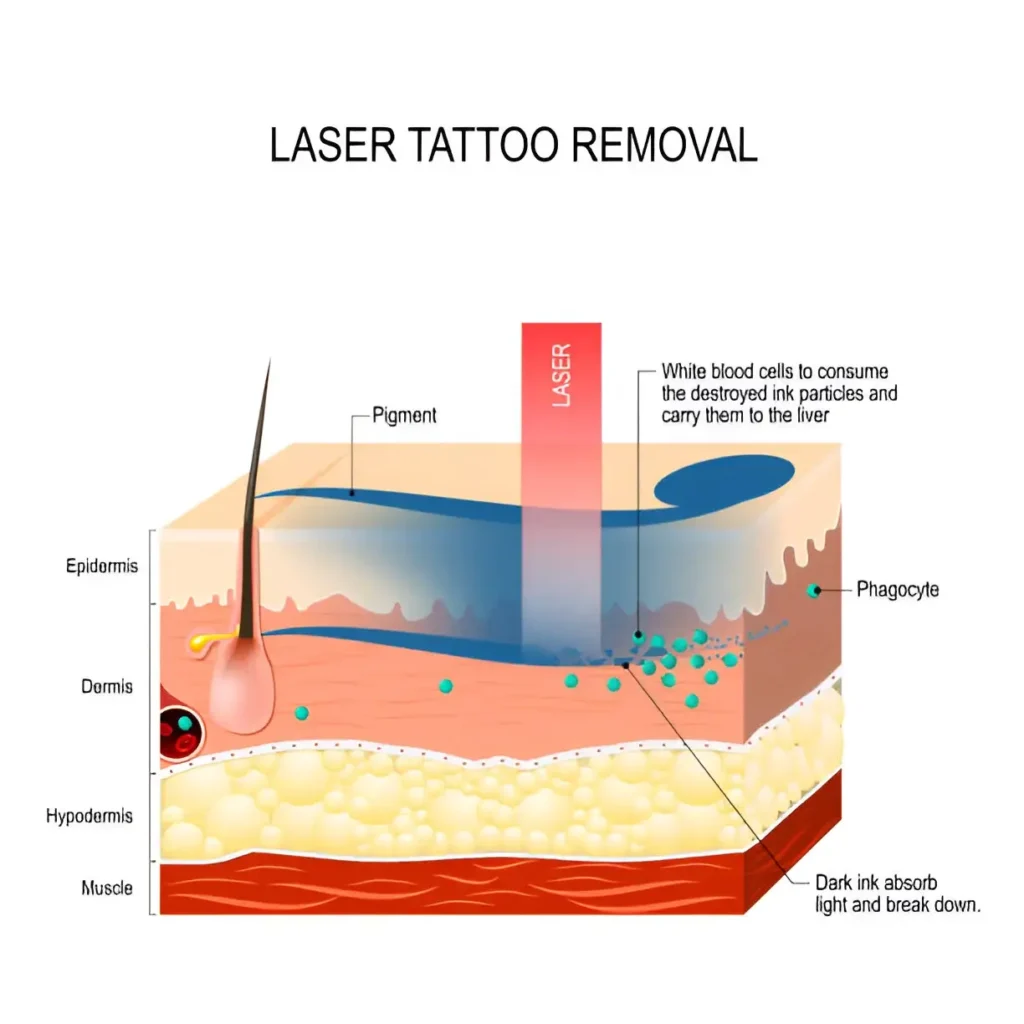
The most effective method of removing tattoos. Ink particles in the skin are broken up by laser technology, which releases concentrated light that breaks up the particles. These particles are then absorbed by the body over time. Laser tattoo removal also leaves scars.
- Pros: High success rate for full removal, works on most ink colors and skin types.
- Cons: Expensive and laser removal requires multiple sessions, but the results are much better than home methods.
Dermabrasion (Performed by a Professional)
The tattoo ink layers are removed by sanding away the skin under controlled, sterile conditions.
- Pros: Effective for some tattoos, particularly older or faded ones.
- Cons: Painful, requires professional supervision to avoid scarring and infection.
Surgical Excision

If the tattoo is small and can be removed surgically by cutting out the tattooed skin, then it may be possible to do so.
- Pros: Quick and complete removal for small tattoos.
- Cons: Leaves a scar and is not suitable for large tattoos.
Final Thoughts: Should You Try Removing a Tattoo at Home?
It does not only seem appealing to remove a tattoo at home due to the lower cost. But these methods are also ineffective and may even be dangerous. When it comes to tattoo removal, it is important to seek the help of a professional, especially if you want permanent, safe, and effective results.
Laser tattoo removal can be financed or bundled with other clinic services if cost is a concern. The most important reason to invest in professional skin care is to protect your skin and prevent long-term damage. For more information, contact with tattoo recover team.

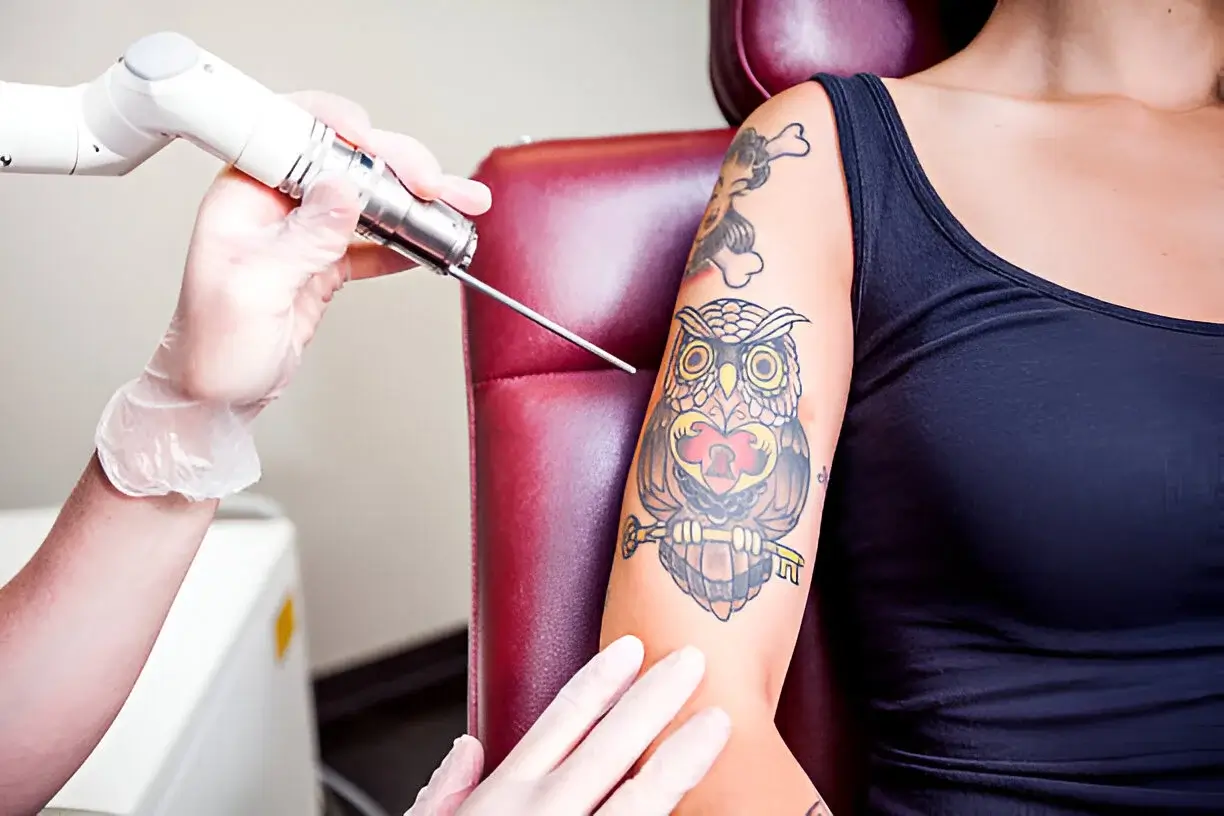
1 thought on “How To Remove A Tattoo At Home”